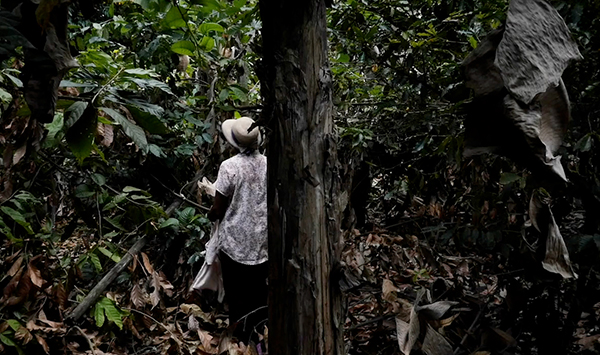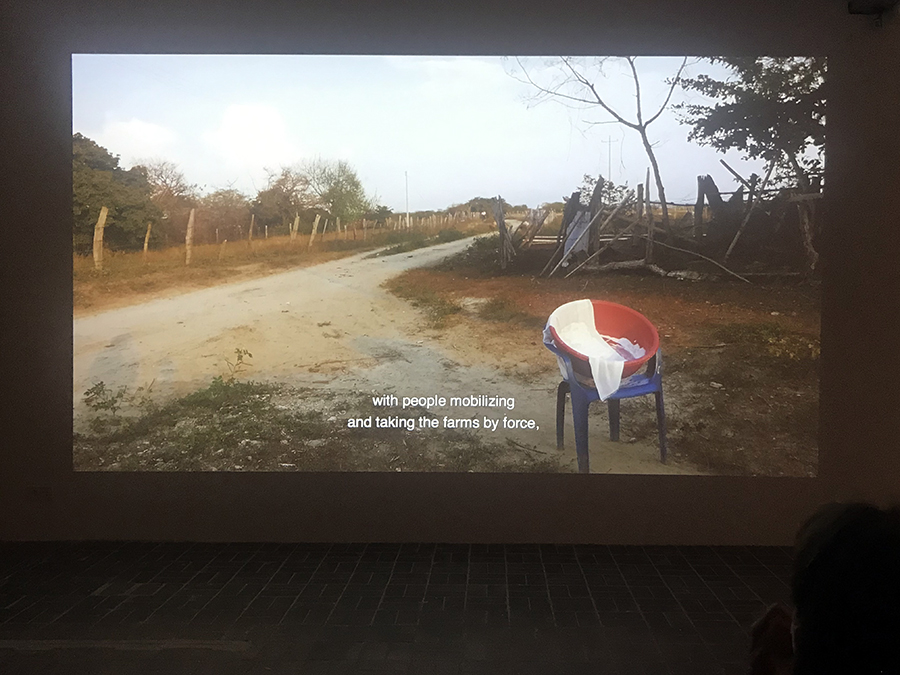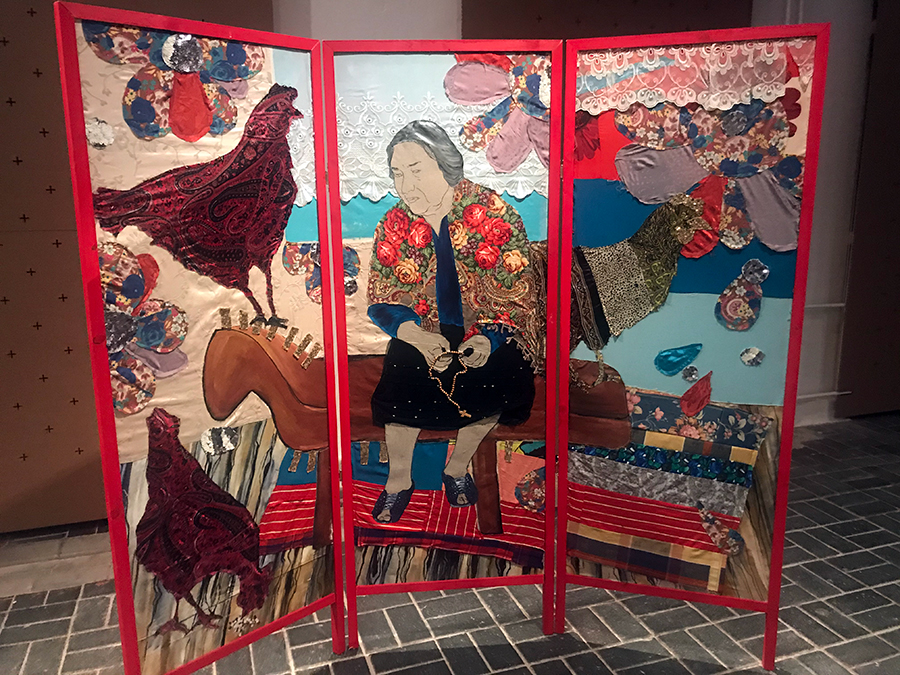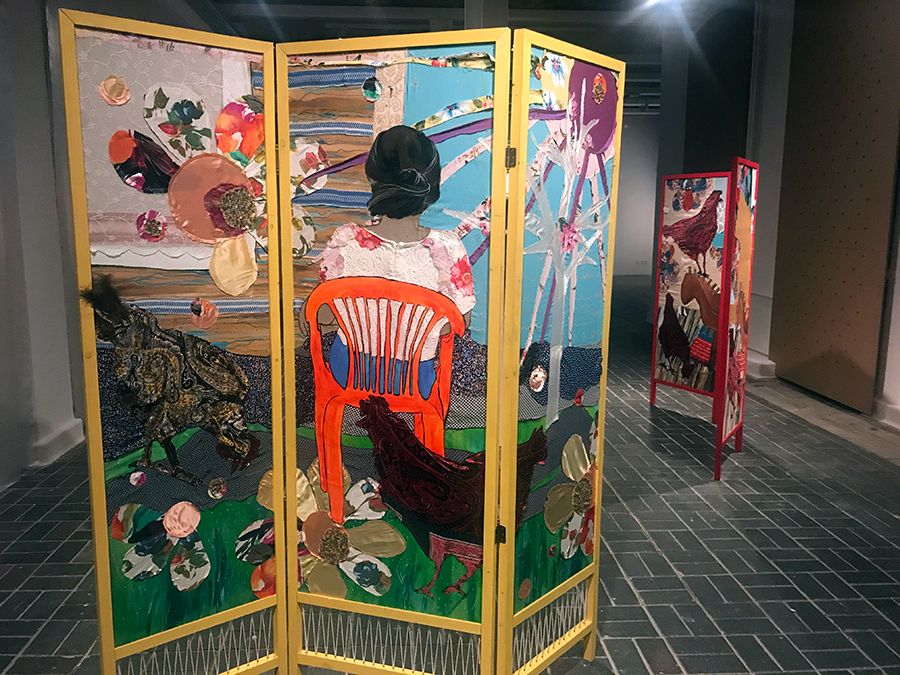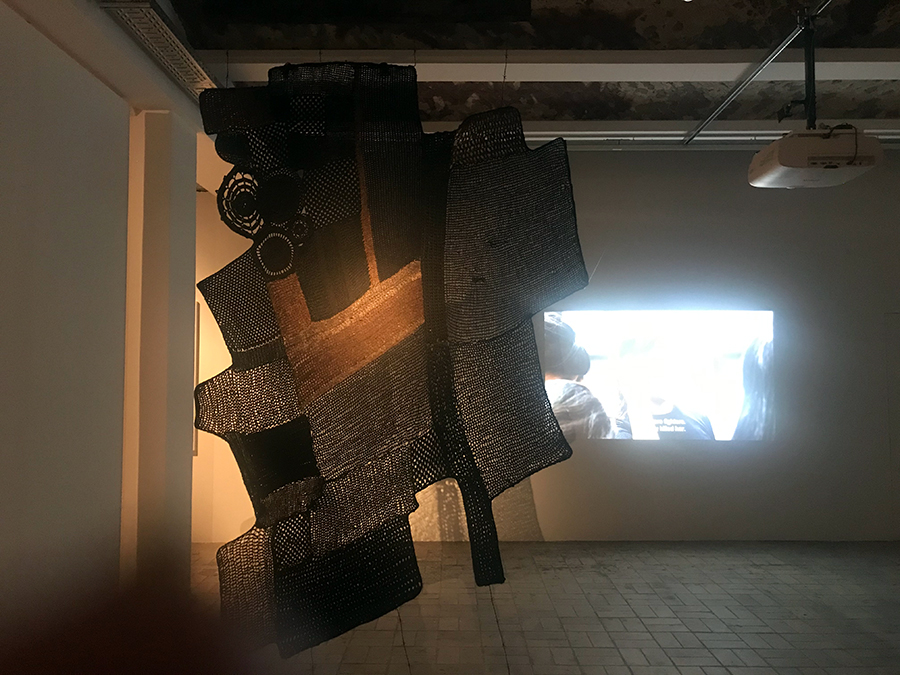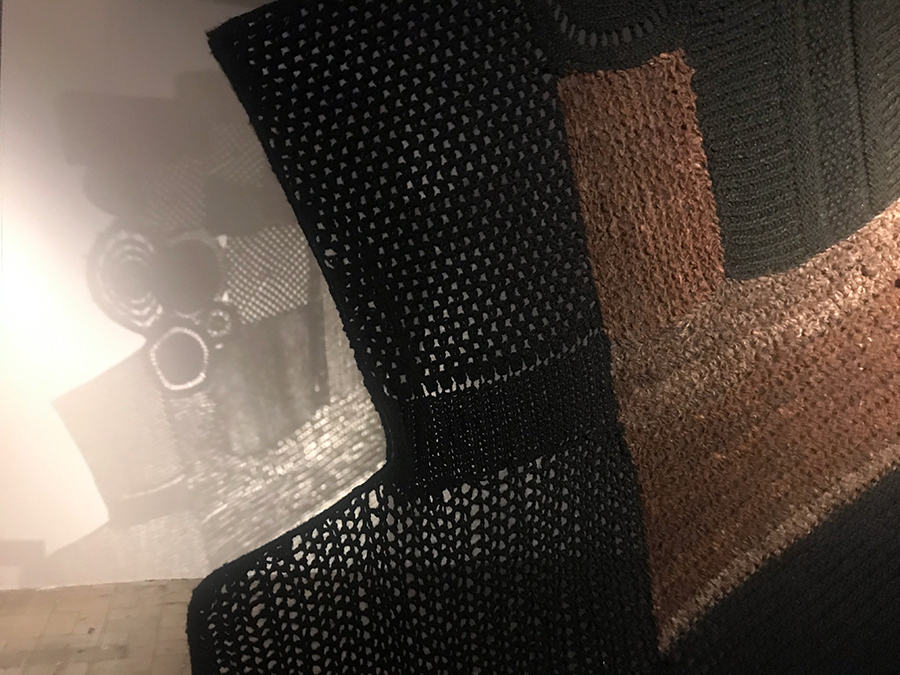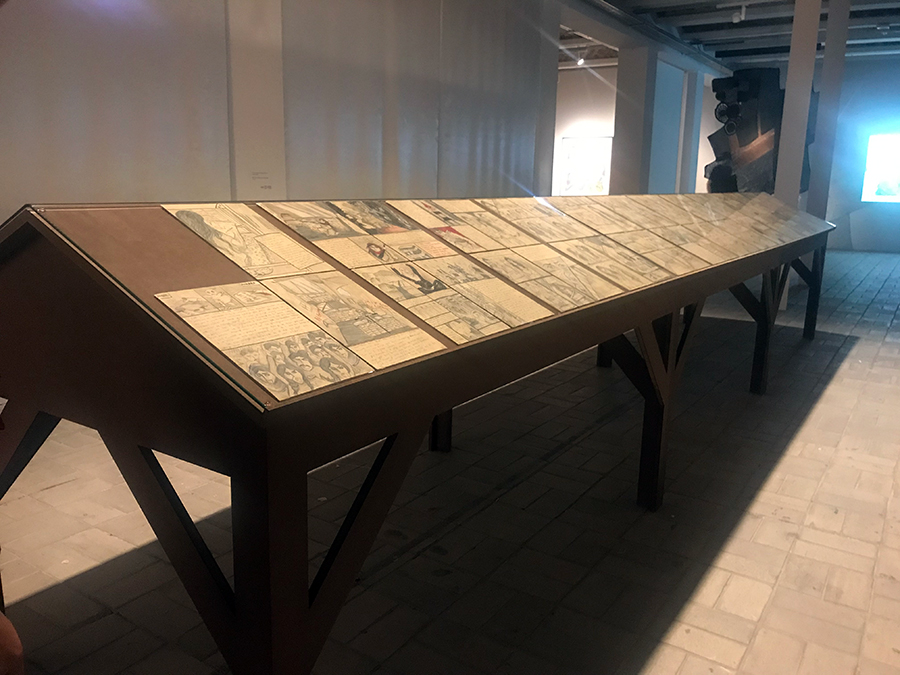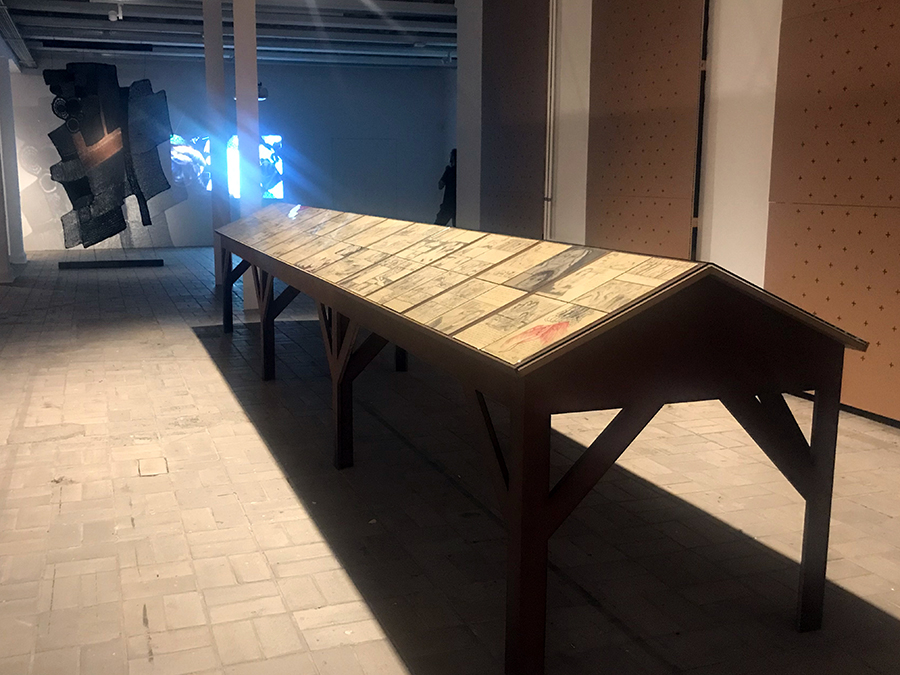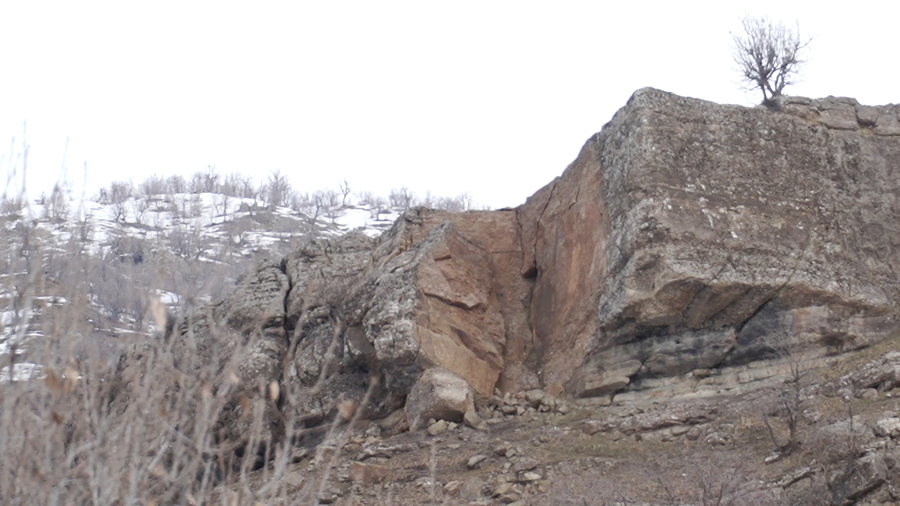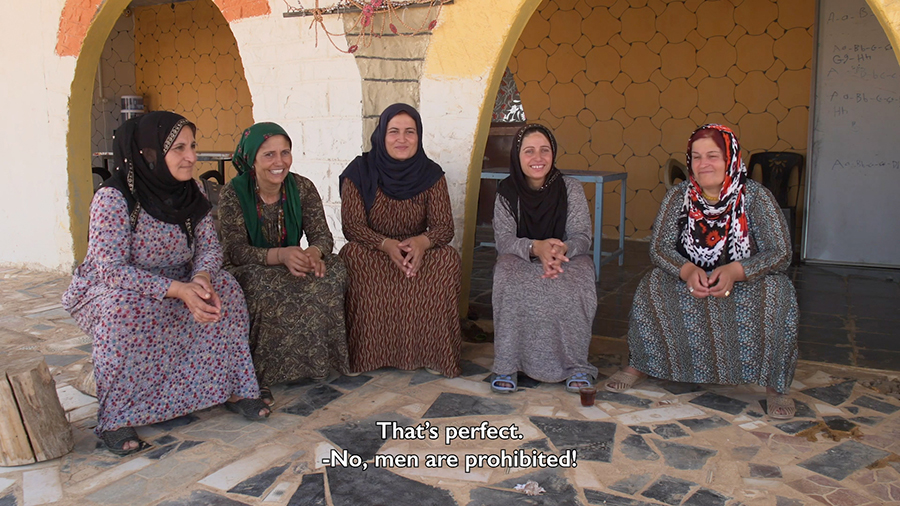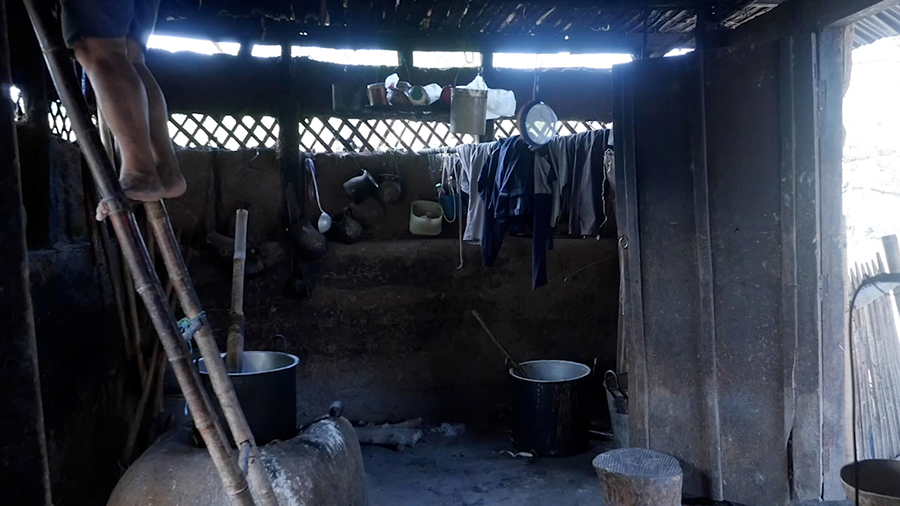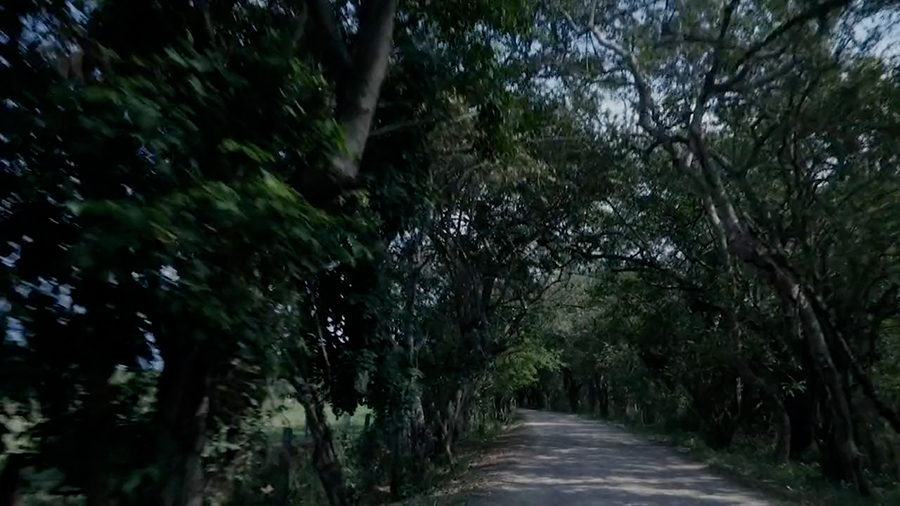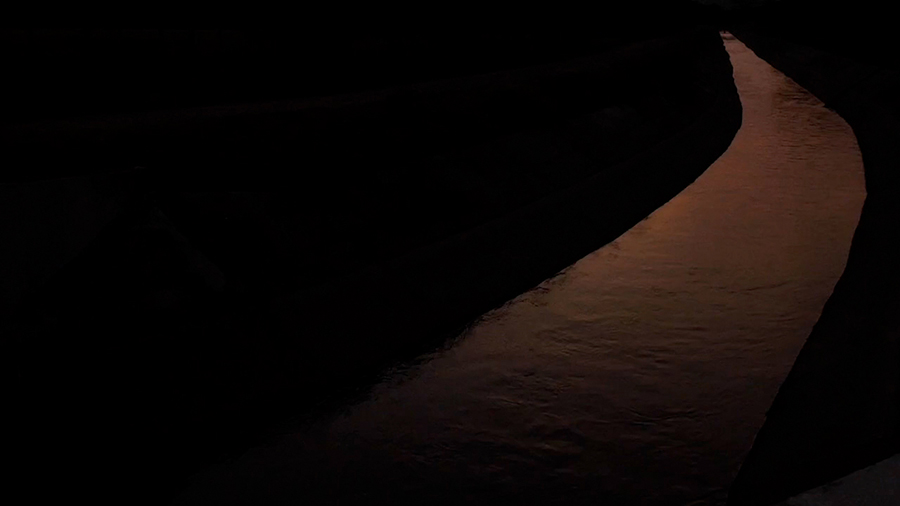Français | English
During my visit at the Berlin Biennial, I met up with Marwa Arsanios during a warm-hearted meal shared on a Berlin terrace. Between fits of laughter and maskless exchanges – in the literal sense of the word – I deeply enjoyed this beautiful meeting during my final evening in Germany.
I had previously come across Marwa’s work since it was located on the same floor as Zehra Doğan’s “Xezên Dizi” series of drawings (the title meaning ‘Hidden drawings’ in Kurdish), along with magnificent installations by Rom artist Malgorzata Migra-Tas “Lost Memory”, and the extremely powerful collective and singular realization by the young Mapuche artist Paola Baeza Pailamilla, “Kurü Mapu” (meaning Black Earth in Mapuche) of which more in a future article. A beautiful space in which women from different parts of the world could meet with expressions that crisscrossed and interwined.
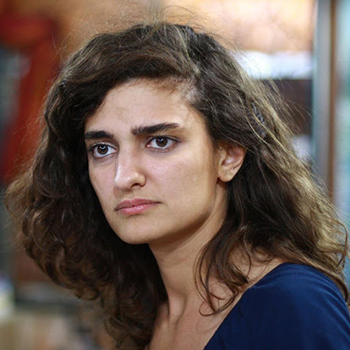
Using topographical maps, videos and installations, Arsanios raises public awareness on environmental issues affecting the city of Beyrouth in Lebanon. Her work approaches an event such as this one in order to bring light on national conflicts the the future of the Lebanese people. Other works by Arsanios integrate elements from pop culture, sexuality, geography and history.
She multiplies her exhibitions, in 2009 I heard 3 stories, Everything about Acapulco in 2010, The Collapse is not happening, the Collapse is ongoing in 2016, Hammer Projects: Marwa Arsanios in 2016–2017…
Currently established in Berlin, she is participating in the Biennial with the third part of her trilogy Who’s afraid of ideology?: Microresistances.
Who’s Afraid of Ideology?
Lebanon, Kurdistan, Syria, Columbia /Trilogy – 2016–2020
By Marwa Arsanios
At the core of the current anticolonial struggle for a wider social and political change we find the reaffirmation of the fundamental life principle against the machinery of capitalist exploitation; and women are fighting on these various frontiers. Marwa Arsenios’ three films in Who’s afraid of ideology (2017–2020) weave an interlinking path through these women’s struggles – in places such as Northern Syria and Columbia – in order to reclaim land and re-establish direct links with nature. Self-defence, ecofeminism, property, healing, resistance, State control, autonomy, collectivity, indigeneous struggles, the protection of seeds and property rights define the common ground covered by these women resisting against industries of extraction.
Reasserting the fundamentals of life against the machineries of capitalist exploitation is the core of today’s anticolonial struggle for wider social and political change, and women are fighting on its differents frontiers. The tree films of Marwa Arsanios’ Wo is Afraid of Ideology? Series (2017–2020) weave an intersectional path through these struggles of women ‑in places such as Northern Syria and Colombia- to claim the right to the land and to reconnect with nature in an unmediated way. Self-defense, eco-feminism, ownership, healing, resisting, state control, autonomy, collectivity, Indigenous struggle, seed protection, and land rights define the common ground of women who are resisting extractivist industries.
How are we choosing to live and survive today? Can ideologies be transformative? How can life be fostered within the context of military conflict and war? Arsanios’ timely questions probe not only the ways in which ideology and theory coincide with living practice but also whether “we” who ate outside these circles of struggle can embody answers. Who is afraid of ideology? Part 1 (2017) and part 2 (2019), are shaped around interviews the artist made with members of the Kurdish autonomous Women’s Mouvement in Iraqi Kurdistan and Jinwar, a women-only commune in northern Syria, exploring the possibilities of a political praxis based on an existence close to nature and within armed struggle. While producing the films Arsanios organized different meetings with women farmers and ecological feminists from Syria, Lebanon, Colombia, Mexico, India, Poland, Denmark and Greece to exchange knowledge around their cooperatives and communes. Who is afraid of ideology? Part 3, Microresistances (2020) draws from these intense exchanges and footage partly filmed in the south of Tolima in colombia. The last film of the trilogy focuses on the ongoing systemic war waged by transnational corporations against the smallest and the most essential element of life-the seed.
(ÖÖD – Excerpt from the Catalogue of the 11th Berlin Biennial)
Part 1, 23 min, 2017
Filmed in the mountains of Kurdistan in the beginning of 2017, this film focuses mainly on the autonomous women’s movement of Rojava and its structures of self-management and production of knowledge. It deals with a guerilla movement which considers the liberation of the sexes as inseparable and of equal importance as the resolution of war conflicts, feodalism, religious tensions and economic struggles. Yet, despite its main focus on ecology and feminism, the women’s autonomous movement is not a liberal project. It is an ideology that has emerged in wartime and which is put in practice in a war setting. The most recent participation in the movement takes into account the Syrian revolution which began in 2011 and is ongoing.
Part 2, 28 min, 2018
It examines different ecofeminist groups, including the women’s autonomous movement in Rojava, and the way in which they attempt to tend both the the earth and to themselves. Using as an example an alliance between a women’s community, nature and animals, Marwa focuses on the various aspects offered by this economic alternative and the reconstruction of the world. The film also raises the problem of the “natural” role devolved to women assigning them to care functions.
Part 3, 30 min, 2020: “Microresistances”
The final part of the trilogy presented to the public at the Berlin Biennial “is inspired by these intense exhanges and images partially filmed in the South of Tolima in Columbia. The final film of the trilogy focuses on the current systemic war led by transnational firms against the tiniest and most essential aspect of life: seeds.” (ÖÖD – Excerpt from the Catalogue of the 11th Berlin Biennial.
